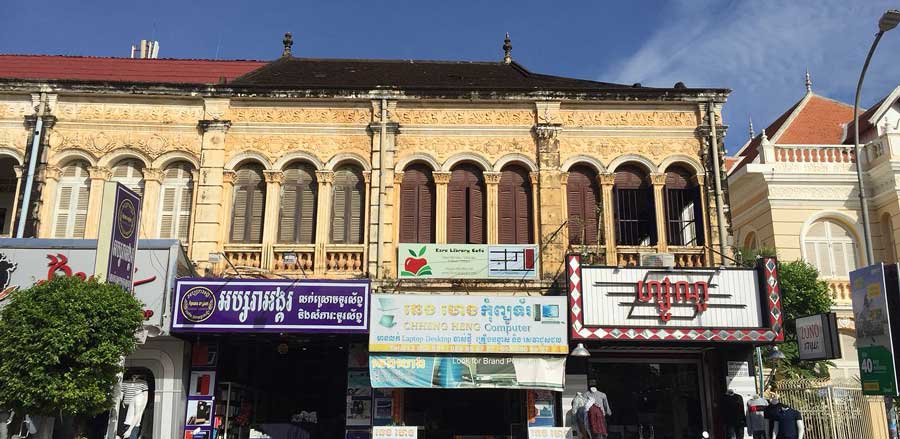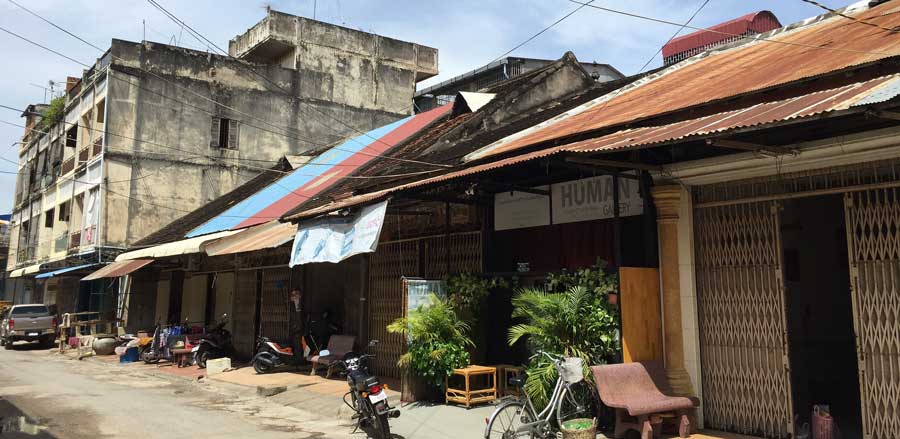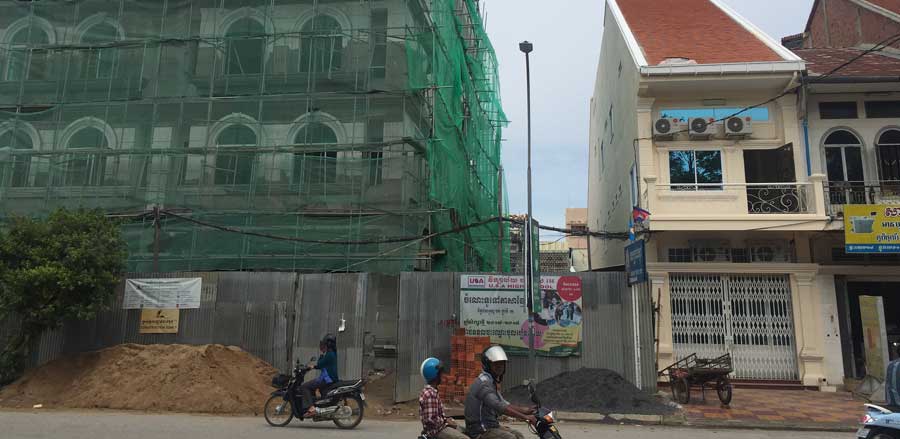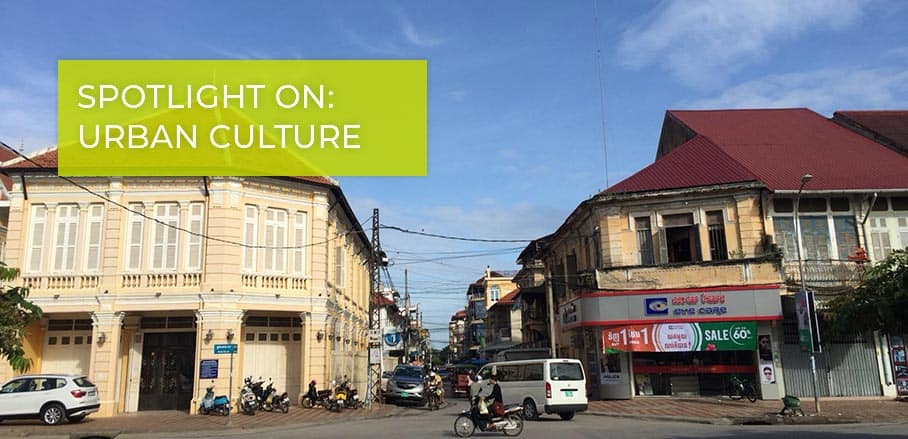What Are Effects of Integrating Heritage Conservation Into Urban Planning? A Case Study From Battambang, Cambodia
A country influenced by a history of colonial rule, totalitarian regimes, and civil war, urban planning in Cambodia has to be considered within its specific context. Looking at the city of Battambang, Milena Wald analyses the role of heritage conservation in urban planning processes.
An Integral Part of Urban Planning
Around the world, urban heritage and its conservation has become an integral part of urban planning processes, as it is understood as a contribution to the community’s well-being as well as a positive influence on the city’s attractivity. This view has been internationally acknowledged at the latest since the creation of UNESCO in 1945.
In this view, urban heritage conservation has not only the goal to preserve the urban past, but is part of an integrated urban development and a resource for the present community. In its most integrative way, urban heritage conservation then focusses on the people and their communities who live within a built environment. It entails that conservation should include tangible and intangible aspects, respect setting and context, be embedded in urban development, and consider a city’s social and economic function.
Urban Heritage Conservation in the Cambodian Context
As a result from Cambodia’s unstable past – the terror regime of the Khmer Rouge (1975-1979), followed by decades of civil war – the country’s development decelerated. Nowadays, rapid urbanisation and an economic boom are putting pressure on urban land use.
Urban planning and urban heritage conservation have been neglected fields in Cambodian cities, which are currently developed anew. Their development, however, faces certain obstacles due to the country’s particularities.
One important aspect is that most heritage buildings in Cambodian city centres date from colonial times, symbolising a time of suppression and old regimes. Now a post-colonial state, population and authorities often feel offended by the continued presence of colonial buildings. It is important to note that apart from positively contributing to the identity of people, urban heritage, when relating to colonialism, can also constrain the formation of people’s identity.

Battambang © Milena Wald
Urban planning has to acknowledge that the will to conserve urban heritage therefore is lower when relating to heritage from the colonial period, meaning that colonial heritage is often not seen as worth conserving. On the contrary, the demolition or modification of colonial buildings appears to be a desirable practice for both the public and the authorities of the post-colonial state, aiming to make the built environment fit the needs of the local community and/or the new authority. This means that, generally, priority is given to intangible heritage or pre-colonial and religious sites rather than to built colonial heritage.
A further obstacle is that there are neither guidelines on conservation nor a regulatory framework on urban heritage conservation embedded in national law. That such regulations would be needed has been acknowledged along with the need to re-establish public institutions after the Khmer Rouge regime, but has been facing challenge of limited human and financial resources.
The high rate of corruption on the level of decision makers constituted another problem. Urban development is highly influenced by private investors who, in case of a tort, have nothing to fear from the governmental level.
Public awareness of cultural heritage’s common value only slowly increased, causing destruction of urban heritage in the meantime: for example, the city sold municipal land in the city centre at high profit to developers, driving the formerly residing, colonial ministries to the outskirts of the city. Heritage buildings were modernised or demolished by small business and shop owners. The restoration of old buildings is further impeded by a lack of traditional knowledge and skills.
Case Study: Battambang
In the northern city of Battambang, Cambodia’s biggest secondary city, there is a special situation. The surrounding region was the last stand of the Khmer Rouge, thus both city and province had been directly affected by the civil war after 1979. Therefore, Battambang’s revitalisation and the entailing unplanned urban growth only started in 1998.
Unlike other parts of Cambodia, Battambang started a pilot project on provincial spatial planning as early as 2004. This early implementation of urban planning assimilated a low-threshold approach on conservation, using campaigns and lectures in the city centre to raise public awareness of the role of heritage conservation. Additionally, the city centre with its around 800 heritage buildings has been integrated into a land-use plan as a ‘ Heritage Protection Area’, but only with informal and not binding guidelines.
The recent urban development of Battambang’s central area can be split in two phases. The first phase, reaching from 1998 until around 2010, has been characterised by a high rate of change which can be basically linked to the revitalisation, inducing population and economic growth. Since 2010, showing the success of the conservation programme’s efforts, the development of Battambang’s city centre has been characterised by stopping the demolition and change of building’s physical structure in the Heritage Protection Area.
Since then the use of buildings has changed as well: an increase in commercial use with a focus on tourists – souvenir shops, western restaurants, tourism-oriented services – contrasts with a decline in residential use and traditional shops. Thus, a risen attention to the economic value of heritage and informal guidelines has
characterised the development of the Heritage Protection Area.

Battambang © Milena Wald
Effects on Battambang’s Urban Development
Since 2010, integration of heritage conservation within spatial planning has had a positive influence on the city.
For example, the city has seen a notable increase in the tourist sector. This can be linked to an increased awareness for the value of heritage and therefore as an influence of integrating urban heritage conservation within urban planning. This has positively influenced Battambang’s overall development, especially on an economic level.
However, several examples from Battambang’s urban development process also underline that awareness and guidelines are not sufficient for successfully protecting urban heritage. If assertiveness and will to implement are lacking, if there are other tasks and goals which are considered more urgent, then the positive outcomes will be limited. This has recently been illustrated by the replacement of the old cinema by a 5-storey building and a modern “wannabe heritage shophouse” alongside Road 1on the Waterfront.

Battambang © Milena Wald
Conservation of the city centre, which today predominantly consists of French colonial shophouses, also plays an important role for Battambang’s urban development, especially due to its commercial use and its touristic importance. It also is an important reminder of Cambodia’s colonial heritage, constituting the biggest French colonial shophouse complex in the country. Finally, it takes a special role in national urban heritage conservation, as it was the first area to be integrated into a land-use plan.
